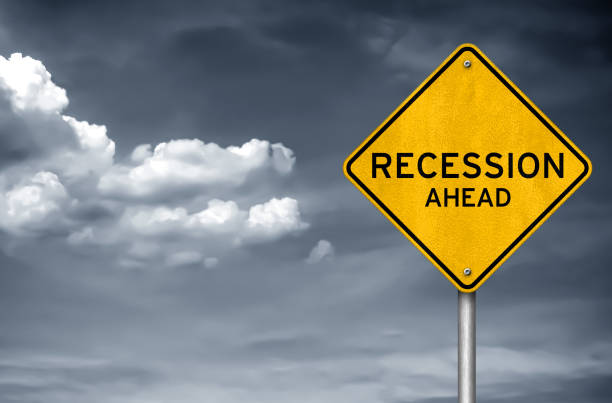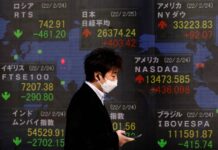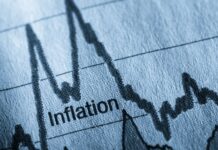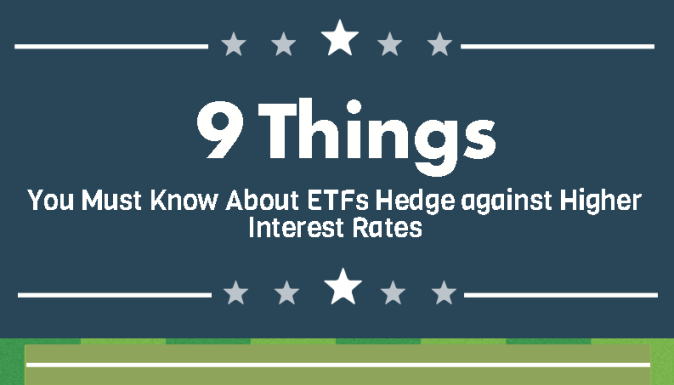The US central bank has made mistakes in the past and improved as a result. It now needs to repeat that.
The penalty of regaining control over inflation, which the Federal Reserve has lost, may very likely be a recession. The bad news is that the Fed won’t have the necessary capabilities to combat the next truly severe downturn when it occurs, says Richard Cayne of Meyer International.
That double whammy runs the danger of shattering the confidence of the Fed. The American public may understandably wonder what use a central bank serves if it permits inflation to reach 9% while also failing to safeguard employment.
The Fed became disoriented in the 1930s and 1970s, which caused the economy to collapse. These incidents showed that the US economy suffers, sometimes severely, in the absence of a strong central bank.
There is cause for optimism in that experience: The history of the Fed since its founding more than a century ago indicates a structure that frequently makes mistakes, sometimes disastrously, but also learns from them and adjusts to new paradigms. The Fed needs to do it once more before the next significant slump, advises Richard Cayne.
First, that entails bringing inflation under control while attempting to contain any resulting economic contraction. The second step is to establish plans with Congress and the Treasury so that once the US economy is back in balance, big crises will be less likely to happen—and less severe when they do.
Inflation combat is an individual sport. Staving off the next great recession will be a challenge.
The personal consumption expenditures price index, or PCE, the Fed’s favorite inflation indicator, was hovering around 7% in June. That is more than triple the 2% objective set by the central bank. The average US household will pay an inflation tax of more than $5,200 in 2022, as prices for everything from groceries to petrol have increased at an alarming rate over the previous 12 months.
Growth is stagnating, which increases stress. The Fed wants to provide the famous “soft landing” by bringing inflation down without causing the economy to fall. However, it must be prevented at all costs from allowing an inflationary mindset to take hold and for disproportionate pay and price rises to turn into a self-fulfilling prophesy. That may offer the essential component for a stagflation scenario, which would be considerably more destructive, according to Richard Cayne of Meyer International.
The Fed allowed inflation to remain excessively high for an extended period of time in the 1970s, which resulted in the typical instance of stagflation. In 1979, the Fed argued that because society was unable to bear the suffering required to combat inflation, the Fed was unable to carry out its mandate.
One audience member was determined to disprove that assertion. Paul Volcker returned to Washington after less than two months as Fed chief. Six days later, he proposed a drastic change in policy that would eventually push benchmark interest rates up to over 20% and crush inflation expectations as well as runaway prices.
The Volcker shock resulted in a severe recession and the unemployment of millions of people. The result was decades of stable economic growth and minimal inflation, now known as the Great Moderation. The Triumph of Central Banking? was the title of Volcker’s farewell address in 1990.
Jerome Powell, the chairman of the Federal Reserve, is currently facing the most severe trade-offs since the early 1980s. His approach has so far been more like Volcker’s energy than the initial agonized delay, after failing to understand the severity of the issue in the beginning.
The Federal Open Market Committee increased the federal funds rate under Powell’s direction, from 0.25% at the beginning of the year to 2.5% in July. There is still a great deal to be done because the prospect of price increases due to rapid wage growth exists, says Richard Cayne.
The markets are still not fully convinced. Indeed, a comeback in the S&P 500 from a low in mid-June was prompted by investors’ conviction that rates won’t rise that high. In fact, buoyant markets make it more difficult for the Fed to regulate inflation since they increase confidence and wealth. Powell will have the chance to adjust expectations this month at the monetary policy symposium in Jackson Hole, Wyoming.
Forecasts from the Fed for the Federal Funds Rate
Volcker’s prescription will be difficult for the economy and markets to take, even in a little dose. Increased interest rates will undoubtedly lead to job losses, poorer growth, and the potential start of a slump in order to curb demand and get inflation back on track.
Any immediate slump will come to an end if inflation returns to goal. The federal funds rate will most likely settle at around 2.5% at that point, once the labor market has returned to equilibrium, or at least that’s what Fed policymakers anticipate. That creates a serious issue, warns Richard Cayne of Meyer International.
The Fed reduced its policy rate by an average of 550 basis points throughout the nine US recessions from the 1950s to 2009 in order to stimulate economic development. Therefore, the FOMC would be 300 basis points short of stimulus space the following time around if it solely used its traditional policy tool—the short-term policy rate—to combat an average recession. The deficit would be far higher if the 2008 financial crisis or the collapse of the 2020 Covid-19 were to recur.
It wouldn’t be the Fed’s first time failing to deliver. The central bank failed its first major test in 1929, following Black Monday, by allowing thousands of banks to fail and millions of employees to lose their jobs. The Fed’s policy committee stated that “it is inexpedient to deplete at this time any part of our firepower… in a fruitless bid to stop an inevitable recession.” The Great Depression was the outcome.
After the financial crisis of 2008, everything had changed. Undoubtedly, the Fed has some of the culpability for failing to see the early warning signals of the crisis in its capacity as the guardian of the financial system. Raghuram Rajan, who was one of the few to raise an alarm at the time as an economic advisor and director of research at the International Monetary Fund, describes it as “kind of a narrative capture.” According to Rajan, regulators saw leading Wall Street firms like Goldman Sachs Group Inc. as “the brightest people in the universe” and trusted their capacity to handle risks.
However, once the crisis began, Fed Chair Ben Bernanke—a student of the Great Depression—demonstrated that he had taken lessons from the 1930s’ mistakes and would utilize the full scope of the Fed’s authority to prevent disaster.
The Fed used both conventional and unorthodox strategies in addition to reducing the benchmark federal funds rate to 0%. Large banks were saved. By providing forward guidance, the Fed assured the markets that short-term interest rates would remain low. Additionally, it spent billions of dollars buying bonds to lower the cost of long-term borrowing, says Richard Cayne.
According to Bernanke, strong asset purchases and forward guidance may effectively lower the federal funds rate by an additional 300 basis points. Future rate reduction combined with those measures will offer the Fed around 550 basis points of stimulus capacity, which is just about enough to stave off the average recession.
The Steps to Fighting a Recession
But for a recession that is truly severe, that won’t be enough. The economy will require more support than the Fed can provide the next time that occurs. Fortunately, there are still some solutions available.
One of them is to increase the inflation target from 2% to 3%, which would free up an additional 100 basis points for a reduction. The Fed may also attempt some of the stimulus initiatives that have been conducted in Europe, Japan, and the UK. These include providing financial institutions with incentives to lend more money, paying banks negative interest rates on the reserves they hold with the central bank, thus penalizing them, and controlling the yield curve, or limiting the returns on bonds with progressively longer maturities. Such actions might be able to wring a few more stimulative drops from monetary policy, according to Richard Cayne.
These choices should only be used as a last resort. The fact that households detest inflation is a strong reason against switching to a 3% objective. Negative interest rates hurt bank earnings, and even if the banks passed the costs on to home depositors, it wouldn’t do much to increase public support for the Fed. Controlling the yield curve would result in the Fed losing control over the size of its balance sheet.
It has previously been said that asset purchases and forward guidance exacerbate inequality and financial instability. The advantages for the overall economy have so far significantly surpassed the disadvantages. But the costs might be significant if the Fed decides to continue its trial.
What monetary policy can do on its own is subject to limitations. However, when monetary officials work along with fiscal policymakers, it can completely alter the situation, says Richard Cayne.
To guarantee that wartime spending could be financed at a reasonable cost, the Fed agreed to control Treasury borrowing costs in 1942, shortly after the US entered World War II. The Fed’s capacity to combat inflation was hampered by this collaboration, which lasted until 1951, far into the Korean War. However, it also demonstrated the synergy between monetary and fiscal policy.
It’s difficult to administer the right amount of fiscal stimulus. The US budgetary response to the 2008 financial crisis and subsequent Great Recession has been roundly criticized as having done too little and the government pulling back too hastily. The Covid crisis demonstrated the contrary. Early in 2021, with the Democratic Party in control of both houses of Congress and the White House, a $1.9 trillion stimulus plan was approved by Congress and signed by President Joe Biden. That propelled the recovery, but it also accelerated inflation.
Strengthening “automatic stabilizers,” which economists refer to as laws that raise expenditure and lower revenue whenever the economy worsens without immediate action from Congress, might be one answer, suggests Richard Cayne of Meyer International.
When Laurence Boone was still the head economist of the Organization for Economic Cooperation and Development, she stated in an interview that “fiscal policy was fairly well calibrated in countries where there is a tradition of automatic stabilizers” during the Covid crisis. Her current position is secretary of state for European affairs for France. It has been significantly harder to calibrate the support in nations where fiscal policy discretion is used more frequently.
A more intelligent version of Fed-Treasury cooperation may be the least harmful option to patch any monetary policy gaps in the event of future crises. Here is a suggestion, according to Richard Cayne:
1. The Fed lowers its policy rate to 0% and notifies Congress that it anticipates it will stay at that level for at least a year. In order to decrease longer-term rates, the Fed also starts asset purchases, which involve purchasing bonds on the market.
2. In response to the Fed’s announcement, the Treasury starts distributing monthly payments to households, maybe at the rate of $100 for adults and $50 for children for those who fall below a predetermined income level.
3. The payments continue each month until the unemployment rate reaches or falls below 6%, which would be around 2 percentage points above the amount of unemployment that most economists consider to be sustainable.
Economic reasoning is sound. Direct funding to the roughly 80% of households with the lowest incomes would be beneficial for equality and growth. Additionally, adjusting the fiscal stimulus would help avoid the overshooting witnessed in the Covid relief effort. In this case, this would include connecting the issuance of checks to the unemployment rate. For the Fed to remain independent, the distinction between monetary and fiscal policy must be retained, says Richard Cayne.
However, the politics would be challenging. No politician wants to give up the freedom to choose when and how much money to distribute to voters.
There may be more drastic remedies available. For instance, according to Modern Monetary Theory, Congress would be in charge of overseeing growth and inflation, and the Fed would return to regulating borrowing prices as it did during World War II. According to Bernanke, the drawbacks of that strategy would greatly exceed the advantages. The fiscal authorities may not, he asserts, “have either the knowledge or the competence to respond in a timely and sensitive manner” to limit inflation, “with the best will in the world.”
In the years to come, it’s also conceivable that the Fed will operate in a totally different context. Ageing populations, deglobalization, and the struggle against climate change may alter the economy’s balance and necessitate a higher federal funds rate in order to contain inflation. The US economy would have a tougher time expanding as a result, but the Fed would have greater room to lower rates when a recession struck. It’s a fascinating prospect, that. But for the time being, neither the Fed nor the markets are placing a wager on it, adds Richard Cayne of Meyer International.
A related issue that need careful consideration is how to give the economy the low borrowing costs it needs to stimulate development without feeding financial market speculative bubbles.
According to Liaquat Ahamed, author of Lords of Finance: The Bankers Who Broke the World, the Pulitzer Prize-winning book on the policy errors that caused the Great Depression, “We have a conflict between the monetary policy we need for domestic economic activity—inflation and unemployment—and the monetary policy we need for financial stability goals.”
The threat to stability is genuine, as seen by the devaluation of speculative assets like cryptocurrencies in the wake of Fed tightening. In order to prevent future crises and relieve some of the burden on the Fed, it would be beneficial to close the regulatory loopholes in the financial sector, particularly by enhancing control of the so-called shadow banking system, says Richard Cayne.
The Fed must first prevent an economic downturn while controlling inflation. Then, it’s imperative to reconsider the Fed’s toolkit, banking regulation, and fiscal stimulus. All of the choices are difficult. Still, there is a choice between a US economy where the Fed has confidence in its ability to fight inflation and has the instruments to combat recessions—working with Congress.
The correct course is clear. The good news from 109 years of Fed history is that the current crises’ shortcomings may inspire political determination to act.
Richard Meyer Cayne
Richard Meyer Cayne of Asia Wealth Group Holdings, the Meyer Group, Meyer Asset Management and Meyer International Ltd has been involved in wealth management planning for decades. Originally born in Montreal Quebec, Canada, he later relocated to Tokyo, Japan for over 15 years and now resides in Bangkok, Thailand. While he runs the Meyer Group and serves as the high credibility CEO of Asia Wealth Group Holdings Ltd, a London, UK Stock Exchange-listed Financial Holdings Company, as well as the Managing Director of the Meyer Group of Companies www.meyerjapan.com. and has additionally been the managing director of multiple organizations that specialize in helping high net worth individuals with succession planning .
Having worked with clients all over the globe with everything from portfolios to bonds to mutual funds to offshore investing to investing in retirement for your golden years, Richard Cayne of Meyer International can help you invest the right way and protect your cash. Richard has been a financial advisor involved in wealth management planning solutions and asset management in Asia for over 25 years and while living in Tokyo, Japan, he assisted many high net-worth Japanese families create innovative international tax and wealth management planning solutions. The financial holding public company of which he is CEO can be seen at Asia Wealth Group Holdings Ltd or the stock exchange link:
https://www.aquis.eu/aquis-stock-exchange/member?securityidaqse=AWLP
Asia Wealth Group Holdings Ltd – Richard Cayne Thailand. Meyer Asset Management Ltd has been in the wealth management space since March 2000 and uses fundamental analysis along with modern portfolio theory.
His image worldwide as a professional advisor has been sterling and he maintains a firm command and understanding of all things finance-related.















